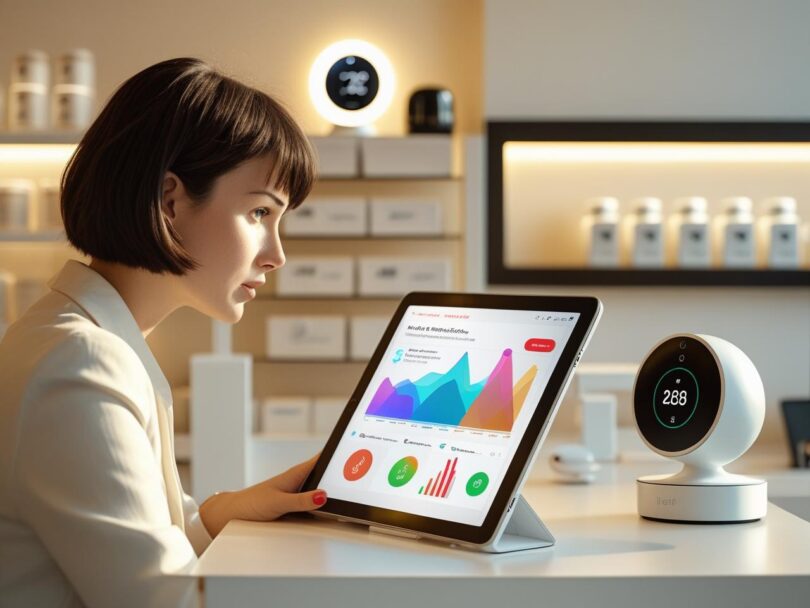The Internet of Things, or IoT, used to sound like something built only for high-tech corporations. Today, it is becoming an essential tool for small businesses that want more control, less waste, and real-time visibility.
Whether you manage a retail store, run a logistics company, or own a local restaurant, IoT can help you track inventory, monitor conditions, or even save on electricity. Best of all, you can start using it without a big investment or a tech team.
What Is IoT in Simple Terms?
IoT refers to everyday devices that are connected to the internet and able to send or receive data. These devices might include thermostats, lighting systems, refrigerators, cameras, and more.
For example, a smart fridge can alert you if it gets too warm. A delivery truck can automatically report its location and fuel levels. A motion sensor in your shop can track foot traffic to improve store layout.
What these devices have in common is that they give you real-time information to support faster, smarter decisions.
Five Ways IoT Can Make Your Business Smarter
1. Lower Utility Costs
Smart lights and thermostats can reduce your electricity bill by adjusting settings based on usage patterns. They help you avoid energy waste when no one is in the office or shop.
2. Improve Inventory Management
Smart shelves or stock sensors track when items are running low. This helps you avoid over-ordering and keeps your best-sellers available at all times.
3. Monitor Your Business Remotely
With IoT, you can check in on your store or workspace using a phone or tablet. This gives you peace of mind when you’re away and makes it easier to respond quickly to issues.
4. Create a Better Customer Experience
If you know your busiest hours, you can adjust staffing accordingly. If you track temperature or lighting, you can ensure the environment stays comfortable for your customers.
5. Strengthen Security
Smart cameras, door sensors, and alert systems can notify you instantly if something unusual happens. This adds a strong layer of protection for your space and your team.
Examples of Small Businesses Using IoT
Many industries are already using IoT in ways that fit their daily operations:
- Retail stores track stock levels in real time
- Cafés use sensors to ensure freezers stay within safe temperatures
- Delivery companies monitor vehicle performance and location
- Offices use smart thermostats to reduce waste
- Clinics track equipment status and room usage
These examples show that you don’t need a massive company or budget to benefit from the technology.
How to Get Started with IoT
You can begin small and build up over time. Some starter options include:
- Smart plugs to control power remotely
- Motion sensors to understand customer flow
- Tablet-based dashboards to monitor data
- Connected security systems for safety
Most of these tools are easy to install and manage, even for non-technical users.
Some popular entry-level platforms include:
- Nest and Ecobee for smart thermostats
- Arlo and Ring for smart surveillance
- Shopify’s inventory apps for retail
- Monnit for environment monitoring
Mistakes to Avoid
Avoid collecting data without knowing how you will use it. Too much information can create confusion if it is not tied to a goal.
Start with simple tools that solve a clear problem. Avoid overcomplicating your setup, and be sure to choose trusted platforms with good support.
Also, make sure you respect privacy rules. If you track customer activity, clearly explain how and why.
IoT is no longer out of reach for small businesses. It offers simple ways to improve efficiency, safety, and decision-making. By starting with a single connected tool and expanding over time, you can modernize your operations without stress or confusion.
Technology doesn’t have to be overwhelming. The key is to find small improvements that support how your business already works and then use data to make smarter choices every day.







